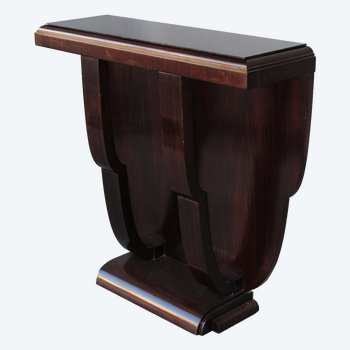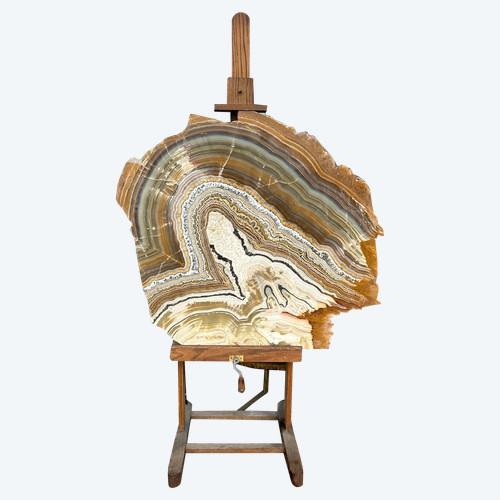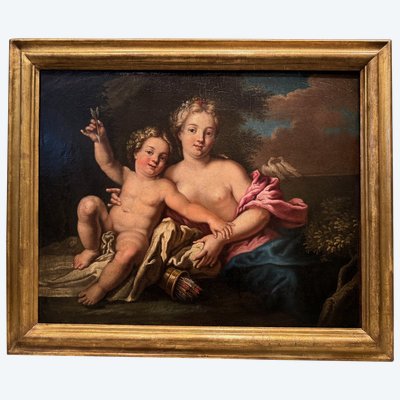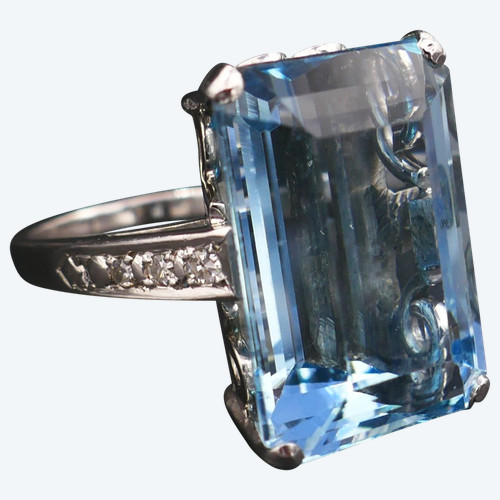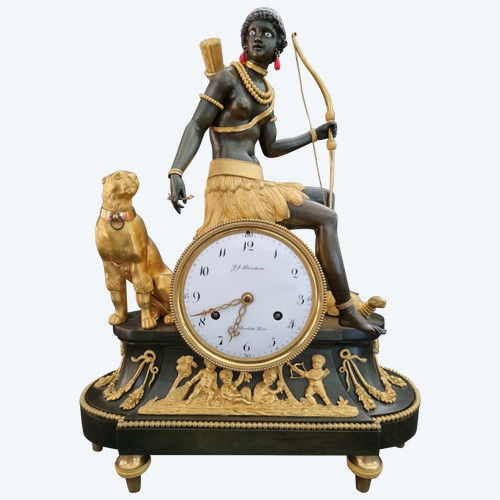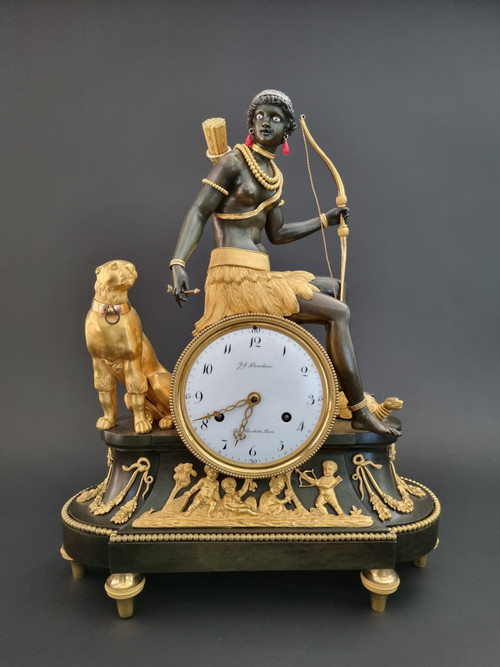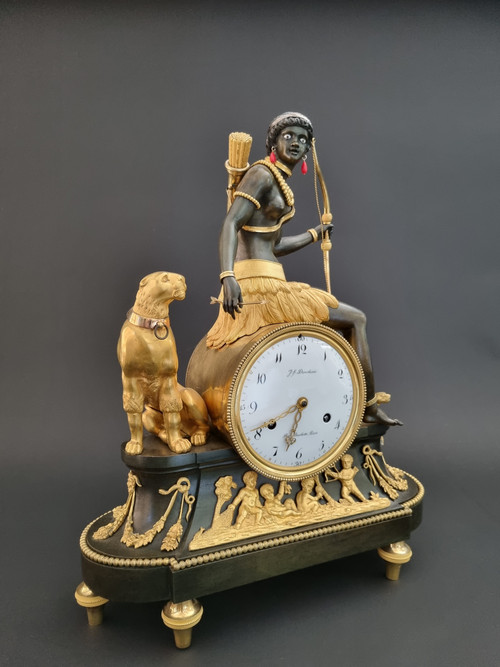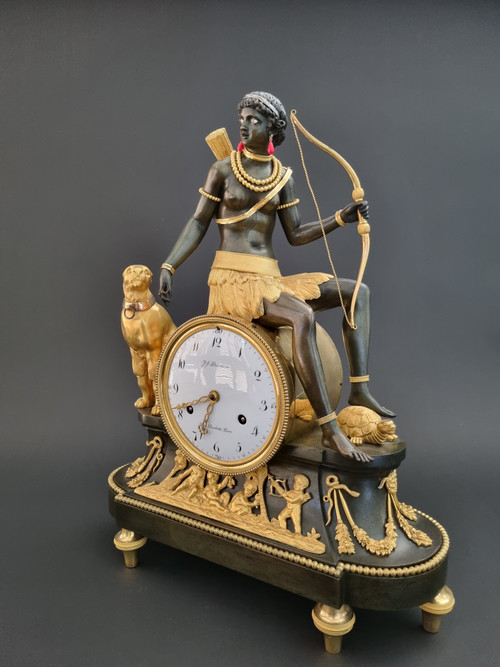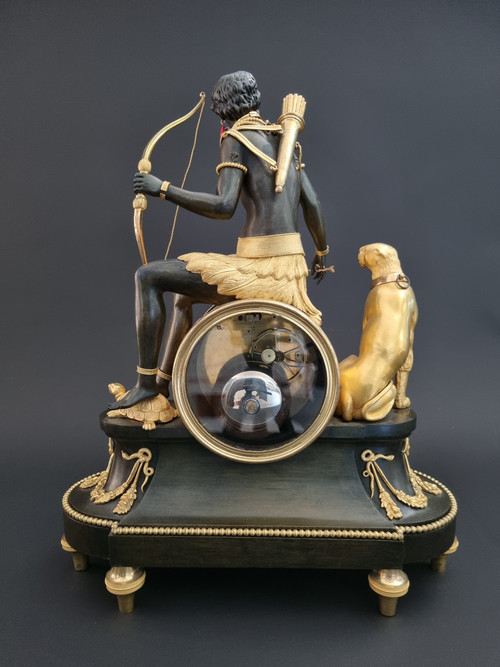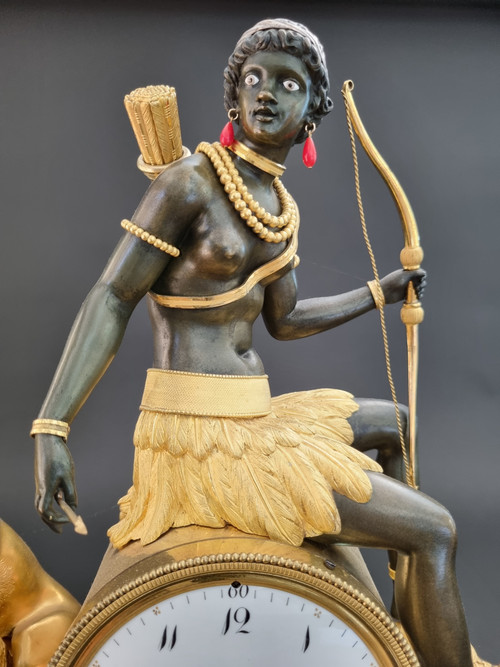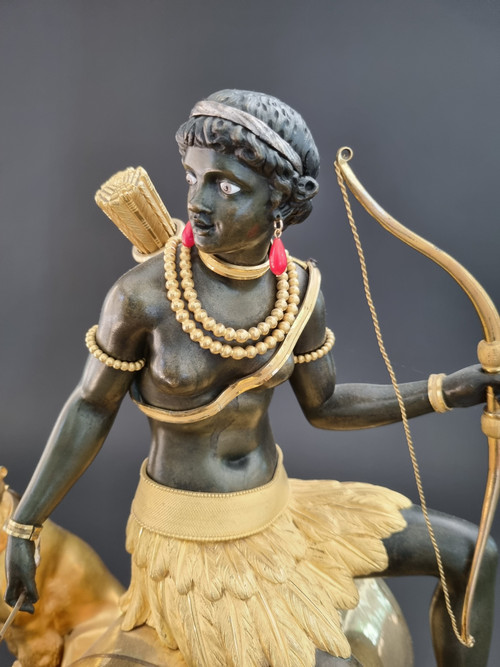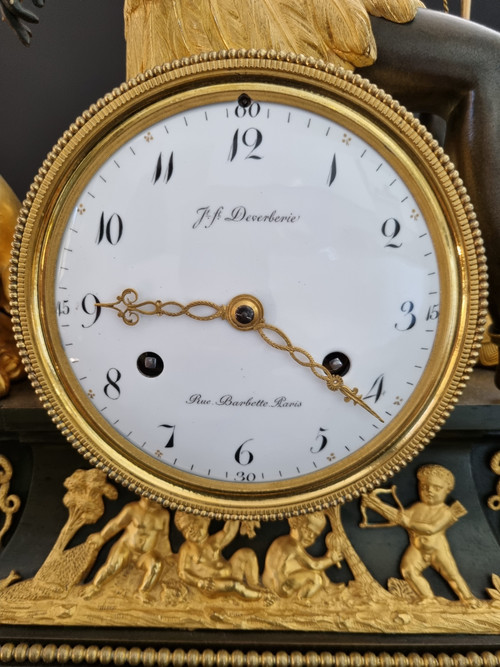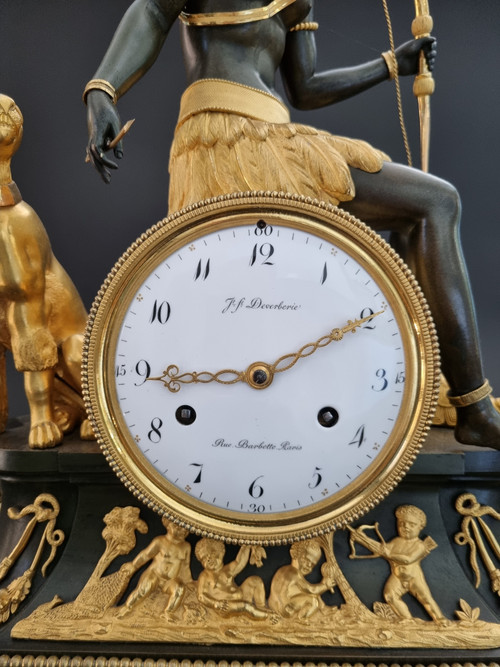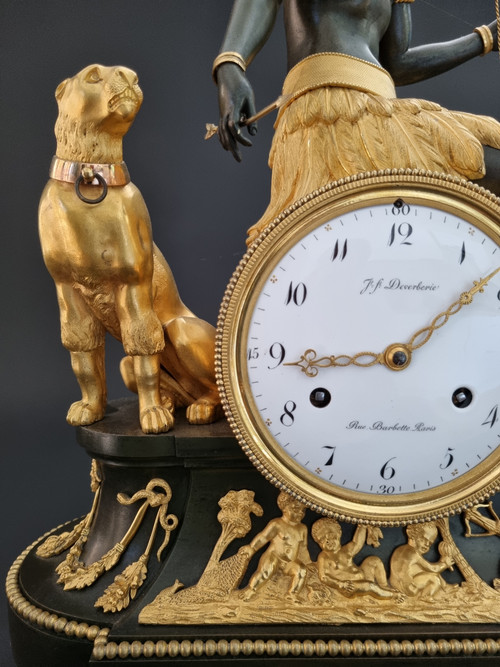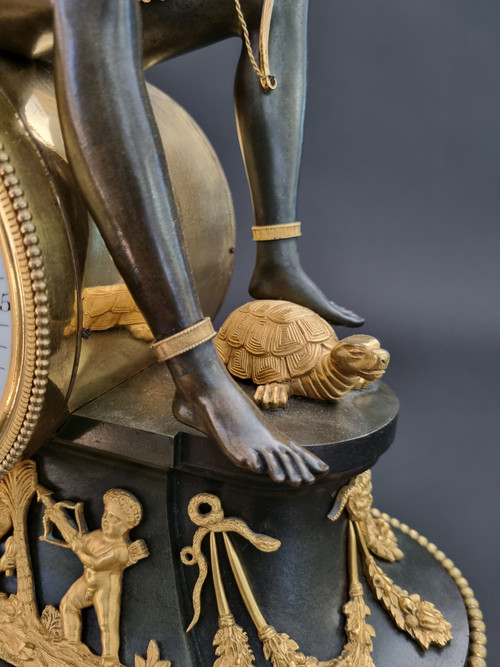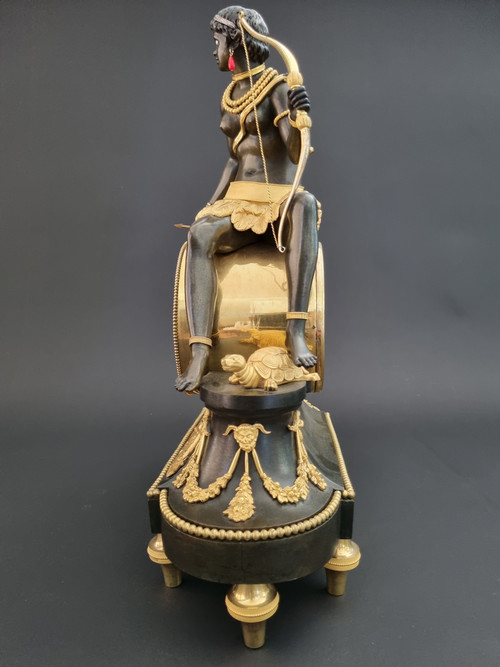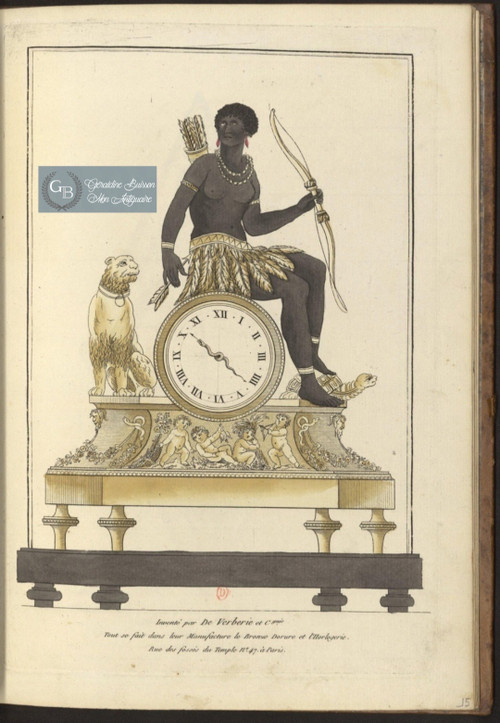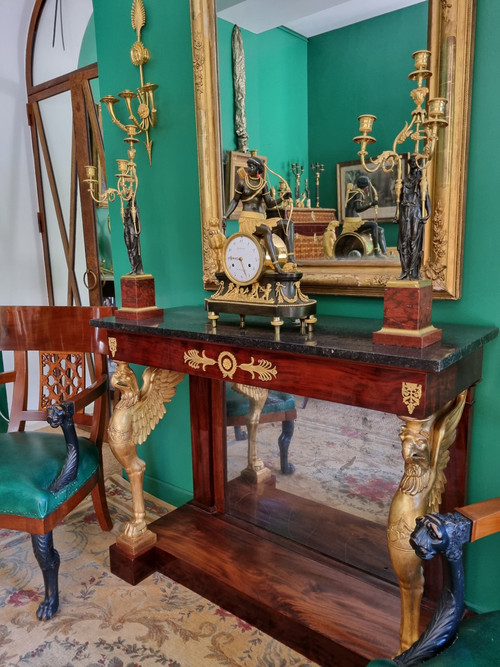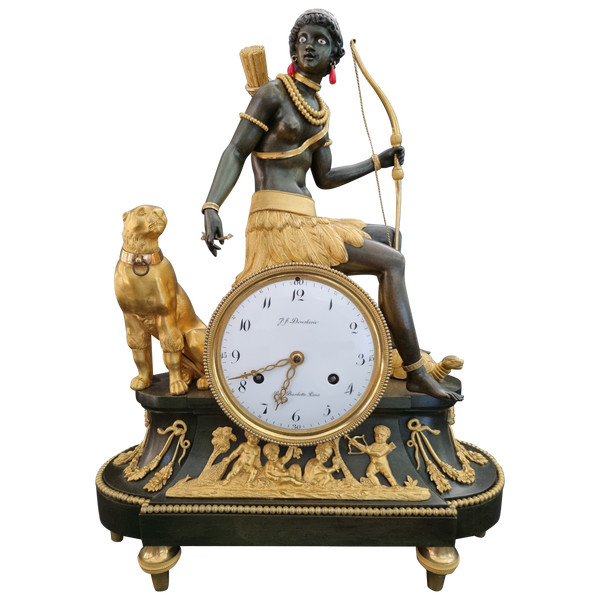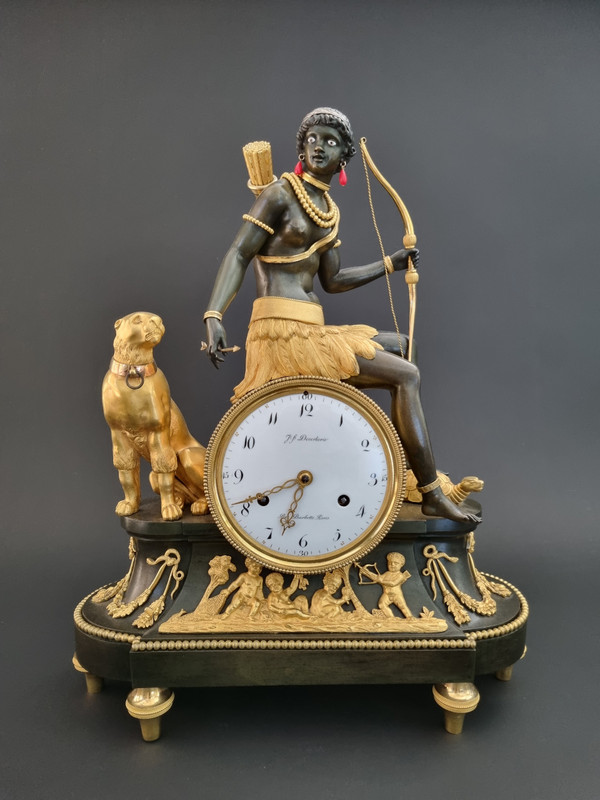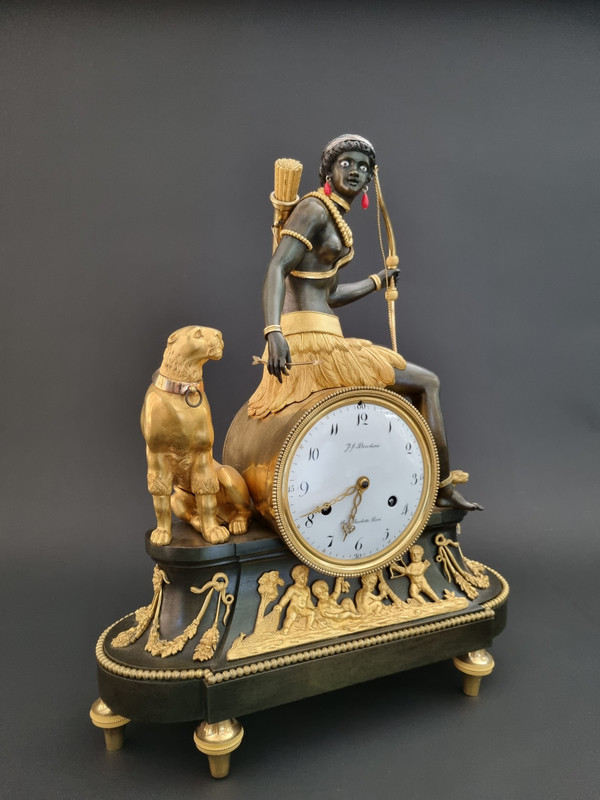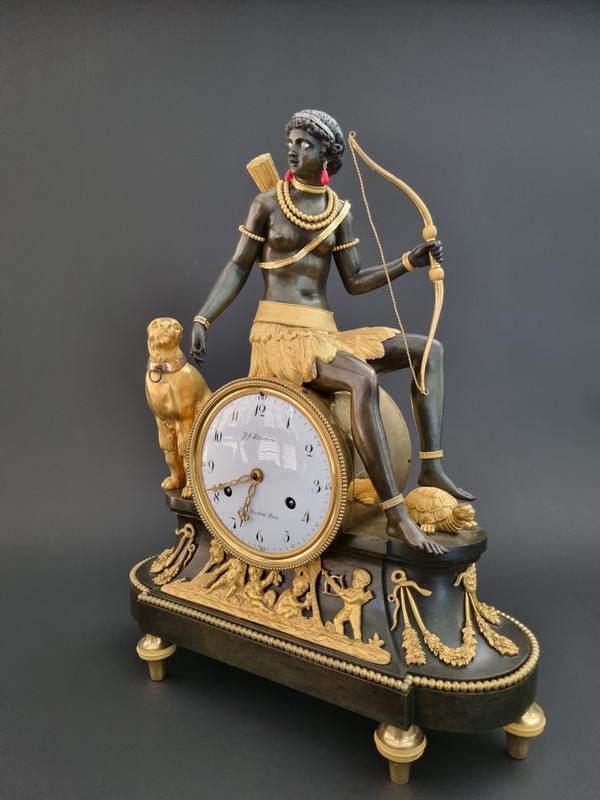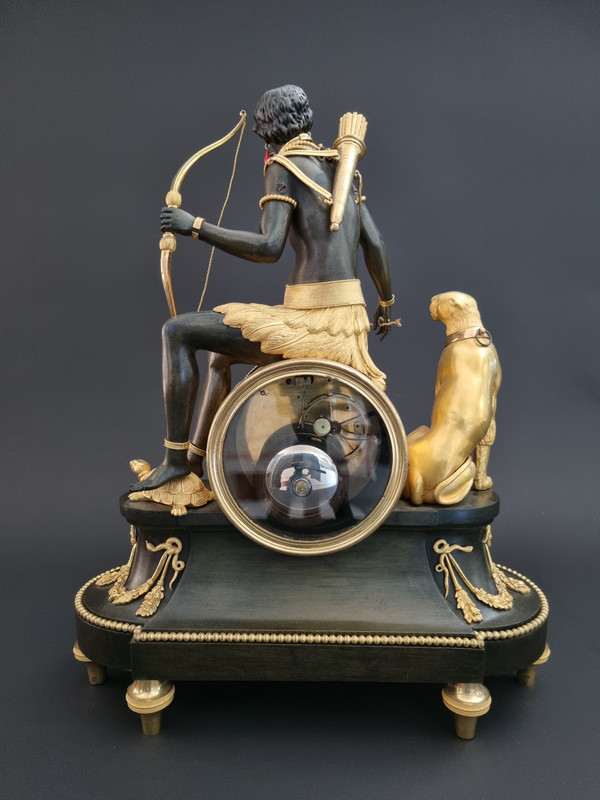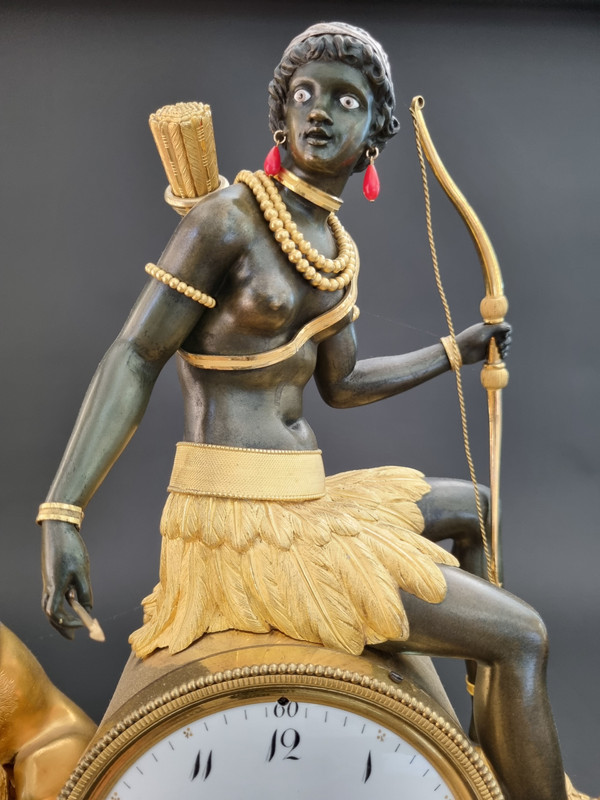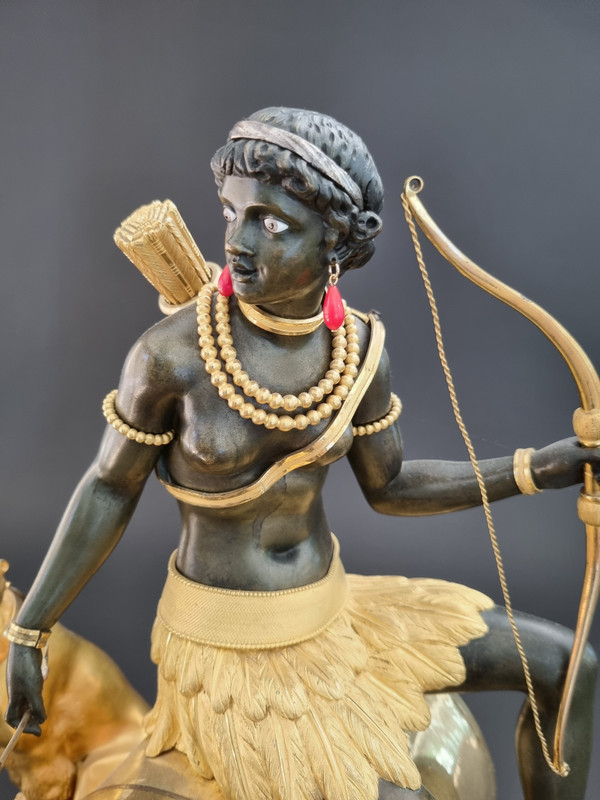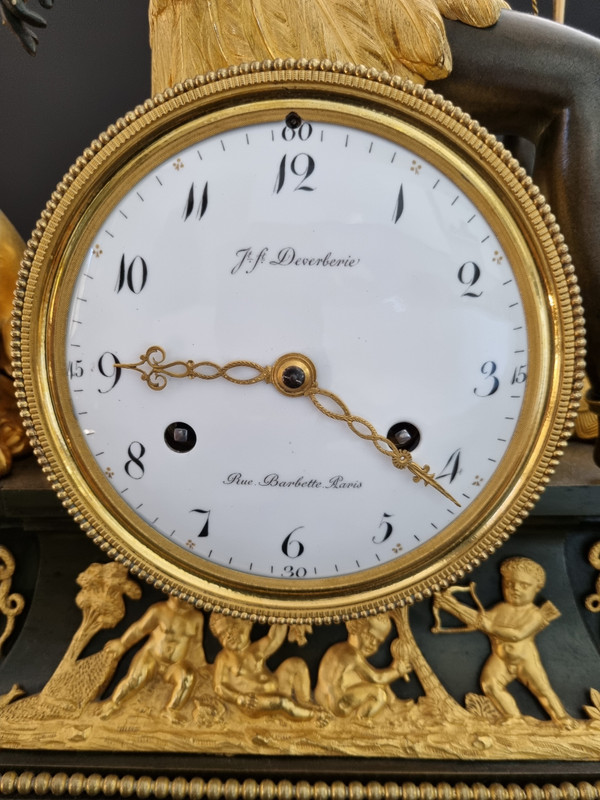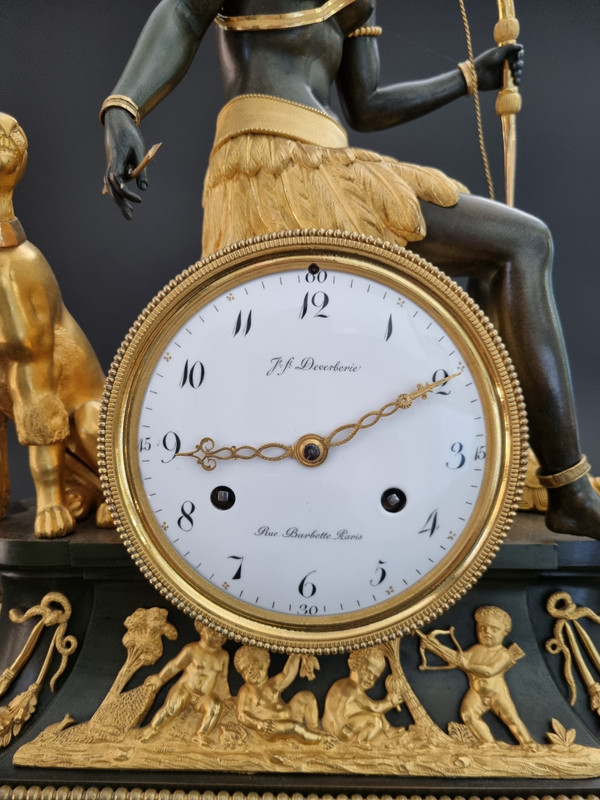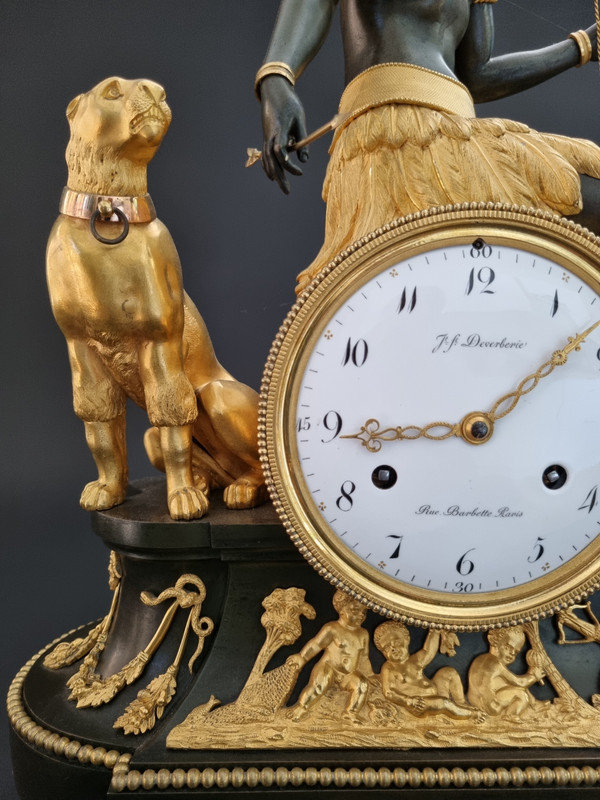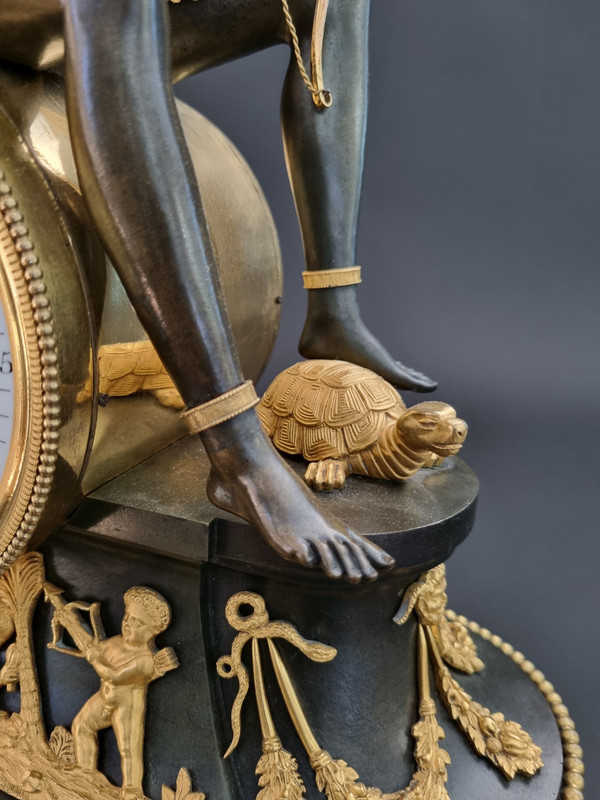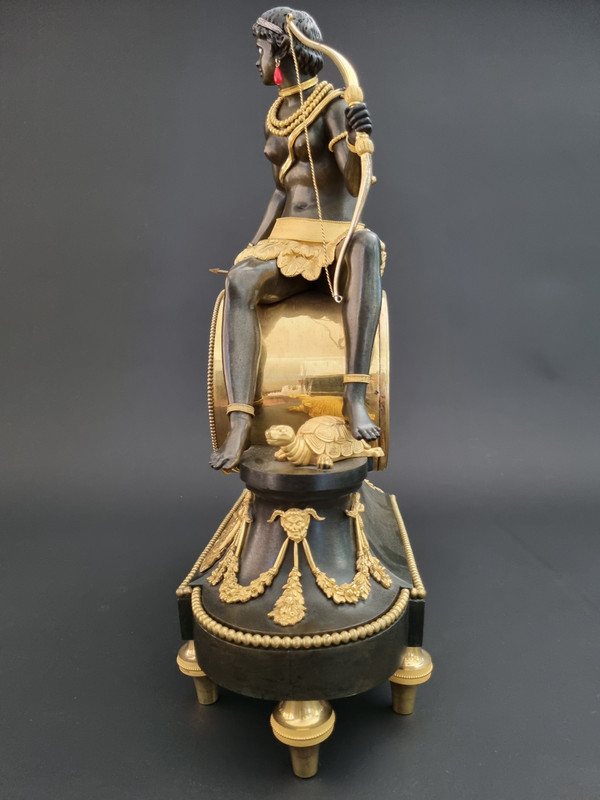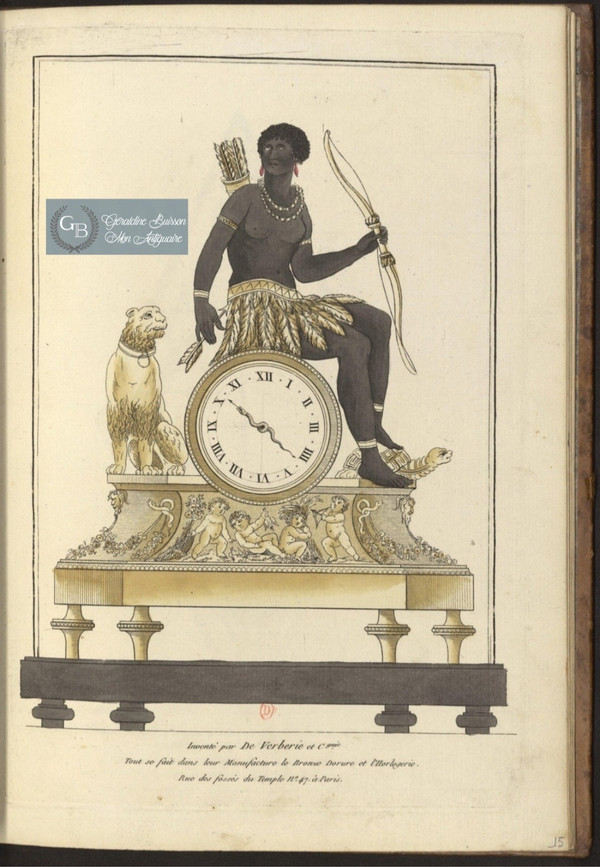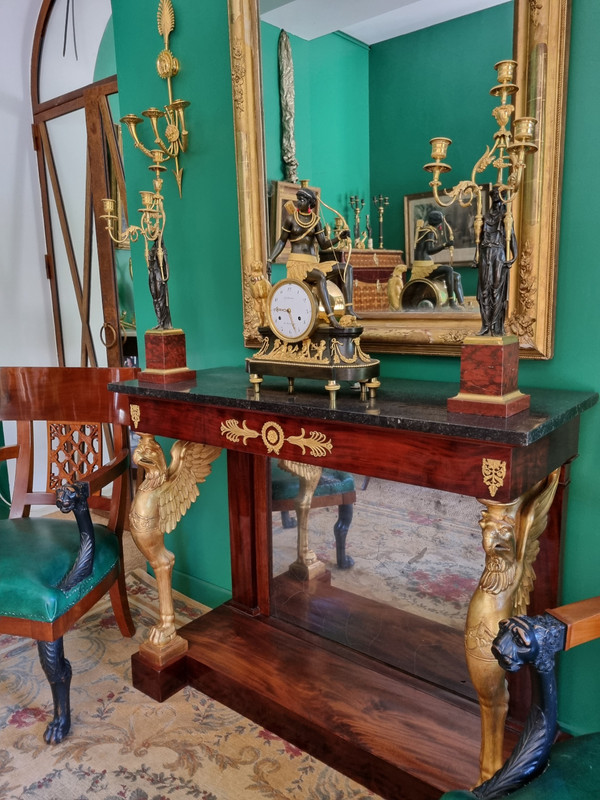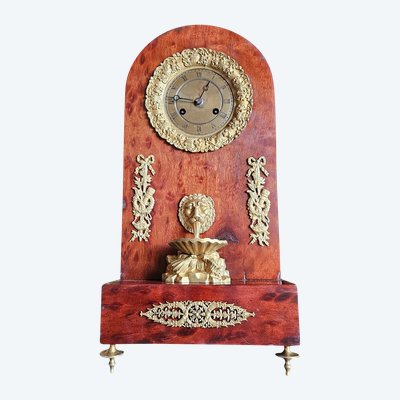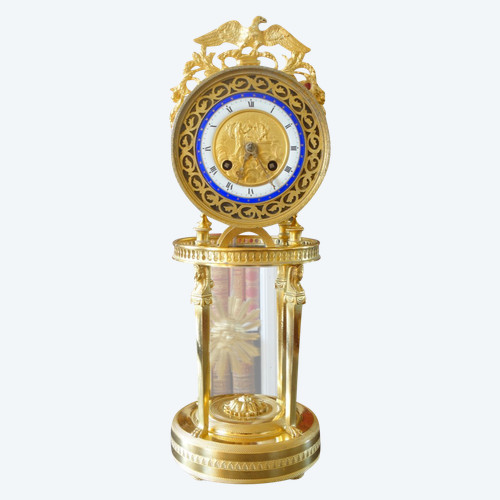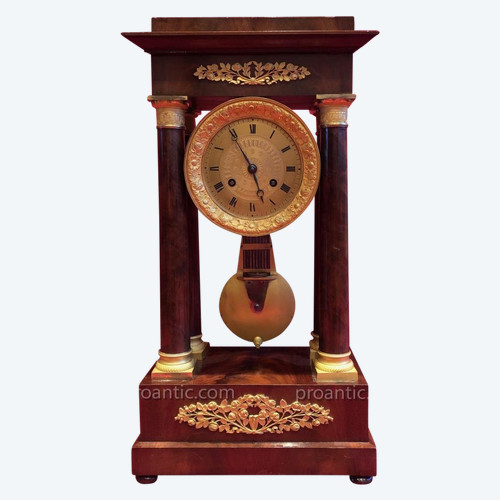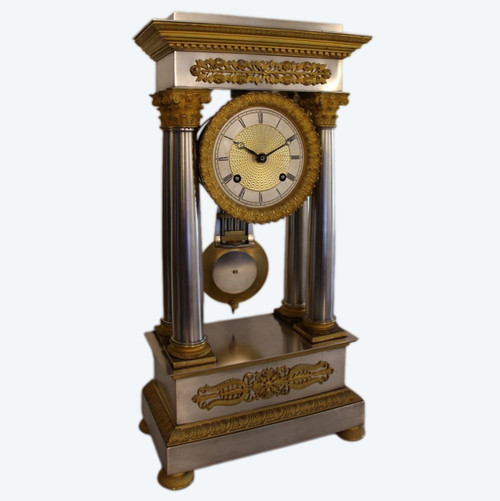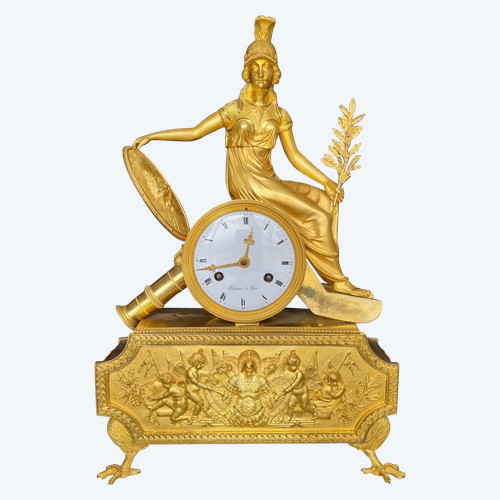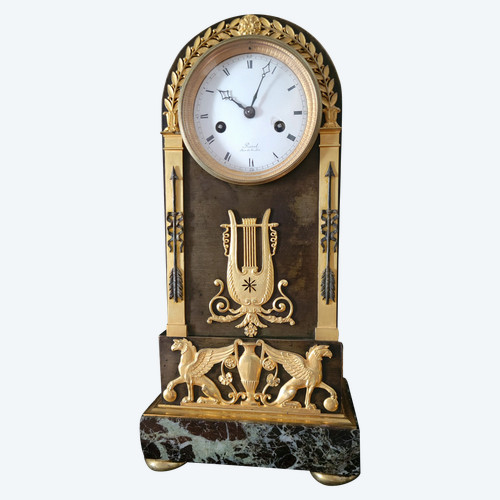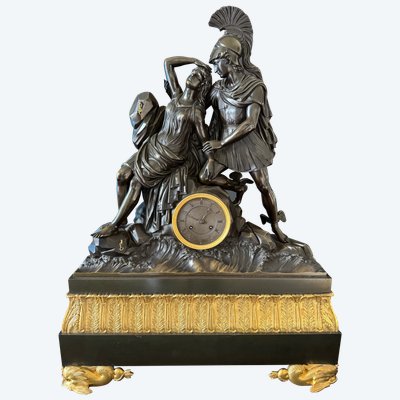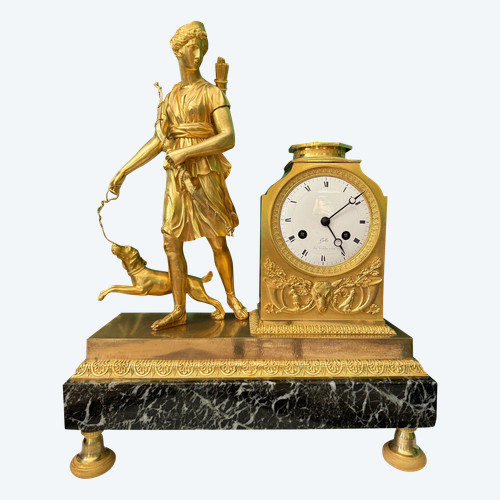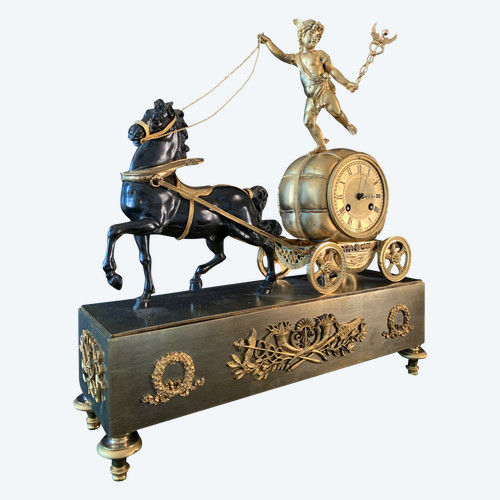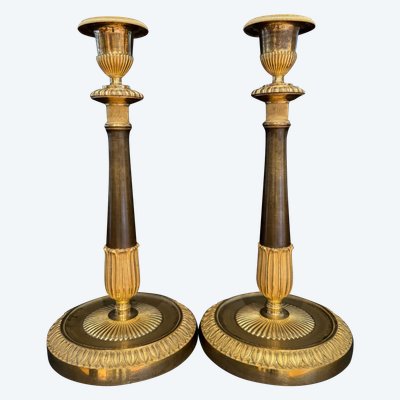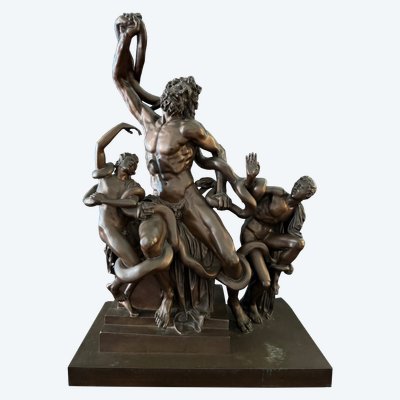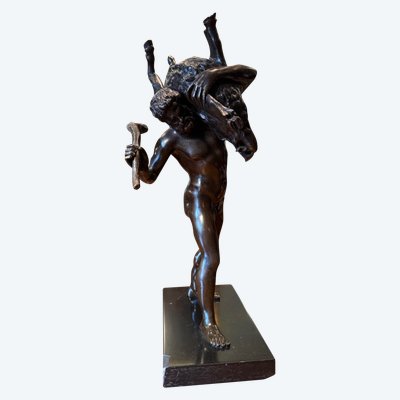This description has been translated and may not be completely accurate. Click here to see the original
Exceptional clock by Jean Simon Deverberie, from the Master's very first models, made in 1800 when he was officiating on rue Barbette in Paris.
Superb enameled dial by Jean Joseph Coteau, the greatest enameler of his time, with gold leaf inlays, called enameled paillons, taking the shape of clovers. Technique that Coteau implemented at the Sèvres Manufacture, adapting it for the most precious clocks.
"Grail" of "Africa" clocks also called "the African huntress", this entirely original model and in an exceptional state of conservation is made in finely chiseled gilded bronze and patinated bronze.
This clock belongs to a separate genre to which the atmosphere of the period must be associated to appreciate its charm and delicacy.
During the second half of the 18th century, a return to the virtues of nature animated society, inspired by the enthusiasm of Jean-Jacques Rousseau. Novels such as Paul and Virginia in 1788, Atala in 1805, or earlier, the adventures of Robinson Crusoe in 1719, helped to relay this craze.
Among all the known models of the African clock, I present here the most exceptional, not only for its quality of execution but also thanks to the signature on its dial:
“It.Ft.Deverberie, rue Barbette in Paris”, for Inventaire Fecit Deverberie.
Certifying its manufacture by the Master himself (because other bronzers copied it at the same time until 1830).
The address rue Barbette (Marais district) allows us to know the period of execution: in the Paris trade almanac, Deverberie operates at this address from 1800 to 1804.
He had also deposited the preparatory drawing of this clock in the Cabinet des Estampes of the Bibliothèque de France in 1799. For this factual reason, the African clock model cannot be from the Directoire period (like certain descriptions of sales may mention it), but indeed from the Consulate period.
Seated on the dial, the African huntress sports unkempt hair enhanced with a silver headband. Dressed in a very finely crafted feather loincloth, contrasting with her precious jewelry: double-row pearl necklace, wrist, arm and ankle bracelets, and earrings.
Her fixed gaze reveals her enamel eyes with pinkish iris (the eyes, when the model is produced by Deverberie, are always rimmed in pink or blue).
His bow in his left hand, an arrow in his right hand and his quiver of arrows on his back give him a conquering attitude, but also imbued with grace and purity.
At his feet, a turtle, symbol of calm, wisdom, determination and sovereignty.
Behind her, the lioness, symbol of courage, combativeness, luck and inner strength.
These two companions complete this symbolic evocation of Africa: Wisdom and wildness.
The patinated bronze base flares towards the base itself highlighted with a row of pearls. It hosts a wall decoration of loves in chiseled gilded bronze, taking up the themes of hunting, fishing and gathering.
On each side, a garland of flowers and fruit held by snakes and a faun mask completes the decoration.
The whole rests on six bronze spinning top legs finely chiseled with a row of small and gilded pearls.
Perfect state of conservation.
“Ground gold” gilding and original patina.
Wire movement entirely revised by an art watchmaker.
Consulate period. 1800
Jean Simon Deverberie (1764-1824)
Jean-Simon Deverberie is one of the most important Parisian bronziers of the end of the 18th century and the first two decades of the following century.
He would seem to have specialized his activity almost exclusively in the creation of clocks, torches and candelabras, decorated with exotic figures, particularly African characters; he deposited numerous models of so-called “negro” clocks, notably the models known as “Africa”, “America” and “Indian and Indian enlaced” (the drawings are kept in the Cabinet des Estampes at the Bibliothèque nationale in Paris and at the Doucet library). He set up his workshop successively on rue Barbette in 1800, rue du Temple in 1804, and finally rue des Fossés du Temple between 1812 and 1820.
Jean Joseph Coteau (1740-1812)
Known as the most eminent enameler of his time, specializing in the decoration of clock dials and metal objects. He collaborated with most of the great watchmakers of his time.
Jean Joseph Coteau, a native of Geneva, became a master painter-enameler at the Academy of Saint-Luc in his city in 1766. Arriving shortly after in Paris, he appears in the registers of the Saint-André-des-Arts parish and set up a workshop on rue Poupée in 1778.
Enameler
From 1779, he invented a new decorative technique: the paillon enameled on porcelain. These are small gold leaves with mo
Ref: 43WNJ27228

